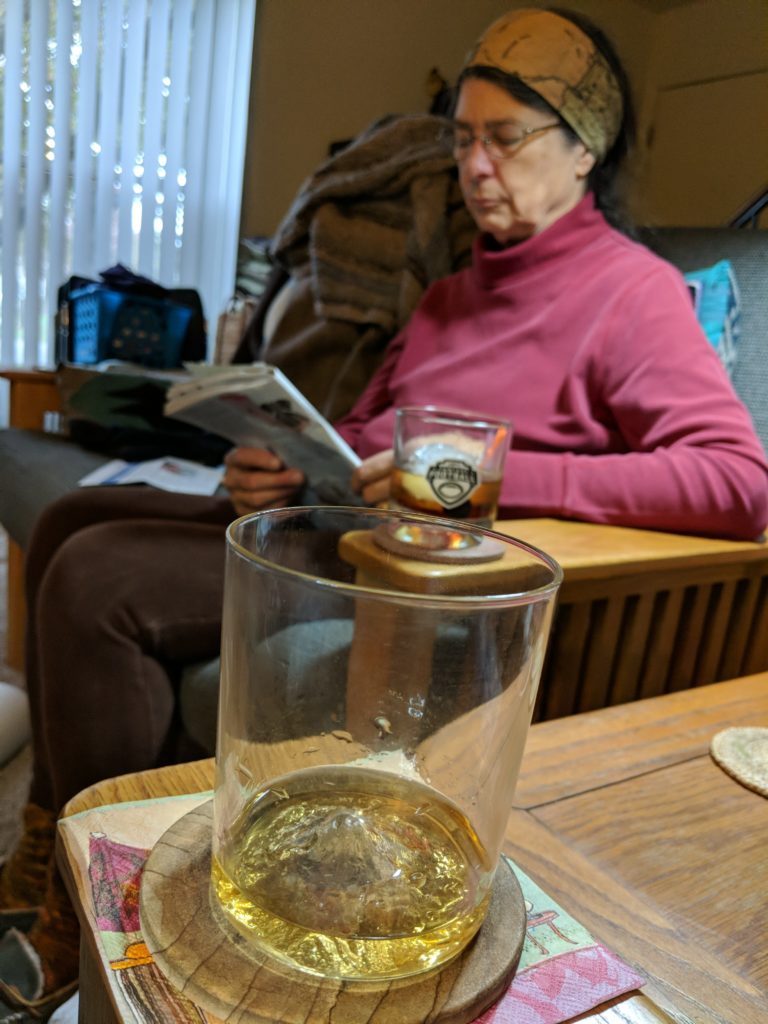Even though I’m finding my self-care regimen for seasonal depression pretty adequate these days, I’m always interested in more tools. One thing that caught my attention recently was an interview with Brant Cortright in which he talked about his book The Neurogenesis Diet and Lifestyle.
Cortright has a bunch of interesting things to say, one of which I already knew: that depression is not a disorder of serotonin deficiency. According to him—and this I did not know—the way SSRIs work is by promoting neurogenesis. In the interview he said that depression turns out to be caused by a lack of neurogenesis, as are several other disorders (e.g. Alzheimer’s).
I checked the local libraries for copies of his book without success, but in my searches I happened upon this article: Successful brain aging: plasticity, environmental enrichment, and lifestyle by Francisco Mora, which seems to cover pretty much the same ground.
People are looking very hard at drugs besides SSRIs to promote brain plasticity, but the whole idea sounds problematic to me, so I’m interested in the various non-drug interventions suggested by Cortright and Mora. Fortunately, it seems that neurogenesis is easy to increase, by doing the obvious things we already know about:
- Environmental enrichment
- Calorie restriction
- Aerobic exercise
- Adequate levels of certain nutrients (omega-3s, vitamin E).
I think of my artist dates in particular as environmental enrichment, but of course time spent in nature counts as well. The parkour I do probably counts double, because there’s learning how to execute the moves, but there’s also learning to see the environment as a place where those moves are useful.
My weight loss practices have been substantially motivated by the science around calorie restriction as a way to improve health generally, with additional neurogenesis just one factor.
My experience over the previous 30 years convinced me that approaching calorie restriction in a numerical, analytical fashion—tracking what I ate, estimating the calorie content, aiming for some target X% below maintenance—would be unsuccessful. Instead, I came at it from the other direction: If I’m losing weight, I must be restricting my calories.
The caloric deficit implied by my weight loss over the past five years is just about 100 calories per day. Maintenance for me is probably around 1800 calories per day, so I’ve averaged about 5.5% below. It would probably be more accurate to say that I’ve averaged about 10% below maintenance for about half that time, as I’ve generally lost weight during the summers while maintaining a stable weight through the winters. Either number is well shy of the “20% to 40%” reduction that’s been shown to decrease the rate of aging of the brain, but I rather suspect that the benefit exists even at these lower levels—with the added bonus of being sustainable over a much longer period of time. (I mean, how long can you maintain a 40% deficit below maintenance before you simply waste away?)
According to Mora, aerobic exercise seems to increase neurogenesis by the same chemical pathways as calorie restriction. According to Cortright, it has to be aerobic activity of substantial duration—some twenty minutes or more. In particular, the sort of HIIT workouts so beloved of the paleo/primal folks don’t seem to produce the same effect. That’s fine with me: Humans are much too well-adapted for endurance running for me to buy into the idea that primitive humans didn’t do marathon-distance runs when they needed to. Besides, I enjoy long runs.
Of course, neurogenesis is reduced by the obvious things:
- Neurotoxins (mercury, lead, pesticides, etc.)
- Traumatic brain injuries (concussions, etc.)
- High blood glucose levels
- Stress.
My parents made a considerable effort to keep me and my brother free of neurotoxins, and I have managed to avoid concussions so far. I’m sure I subjected myself to excessive blood glucose levels for years, but I think I’ve got that under control now. I also subjected myself to excessive levels of stress for years, due to the vicious circle of my seasonal depression making me unproductive, my lack of productivity making me stress about losing my job, and the stress no doubt worsening my depression. I’ve got that under control now as well.
Really then, this whole neurogenesis thing doesn’t so much give me new strategies for staving off depression, as provide a conceptual framework for organizing the strategies I’m already using.
Even just that seems worthwhile.
(The image at the top is of these great doors at the Environmental Education Center at Kennekuk County Park. The branching trees reminded me of neurons, a little.)
 Probably just another instance of “people who drink moderately have other healthy behaviors as well,” but very much in keeping with my preconceptions:
Probably just another instance of “people who drink moderately have other healthy behaviors as well,” but very much in keeping with my preconceptions:

